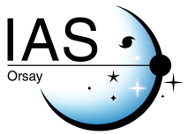On the detection of the integrated Sachs-Wolfe effect with stacked voids
| Title | On the detection of the integrated Sachs-Wolfe effect with stacked voids |
| Publication Type | Journal Article |
| Year of Publication | 2013 |
| Authors | Ilic, S, Langer, M, Douspis, M |
| Journal | Astronomy & Astrophysics |
| Volume | 556 |
| Pagination | 12 |
| ISSN | 0004-6361 |
| Keywords | isw, large-scale structure, wmap |
| Abstract | The stacking of Cosmic Microwave Background (CMB) patches has been recently used to detect the integrated Sachs-Wolfe effect (iSW). Focusing on the locations of superstructures they identified in the Sloan Digital Sky Survey (SDSS), Granett et al. (2008a, Gr08) found a signal with strong significance and an amplitude reportedly higher than expected within the LCDM paradigm. We revisit the analysis using our own robust protocol, and extend the study to the two most recent and largest catalogues of voids publicly available (Pan et al. 2012, Sutter et al. 2012). We quantify and subtract the level of foreground contamination in the stacked images and we determine the contribution on the largest angular scales from the first multipoles of the CMB. We obtain the radial temperature and photometry profiles from the stacked images. Using a Monte Carlo approach, we compute for each catalogue the statistical significance of the profiles and identify the angular scale at which the signal-to-noise ratio (SNR) is maximal. We essentially confirm the signal detection reported by Gr08 but for the other two catalogues, a rescaling of the voids to the same size on the stacked image is needed to find any significant signal (with a maximum at \~{}2.4 sigmas). This procedure reveals that the photometry peaks at unexpectedly large angles in the case of the Gr08 voids, in contrast with the Sutter et al. catalogue. Conversely, the photometry profiles derived from the stacked voids of Sutter et al. contain small central hot spots of uncertain origin. We also stress the importance of a posteriori selection effects that might arise when intending to increase the SNR, and we discuss the possible impact of void overlap and alignment effects. We argue that the interpretation in terms of an iSW effect of any detected signal via the stacking method is far from obvious. |
| URL | http://www.aanda.org/10.1051/0004-6361/201321150 http://arxiv.org/abs/1301.5849 |
| DOI | 10.1051/0004-6361/201321150 |



